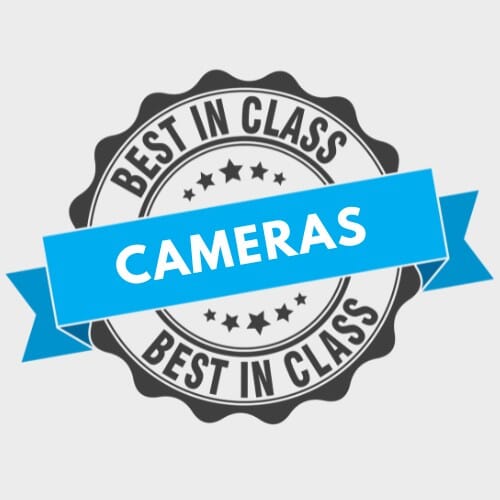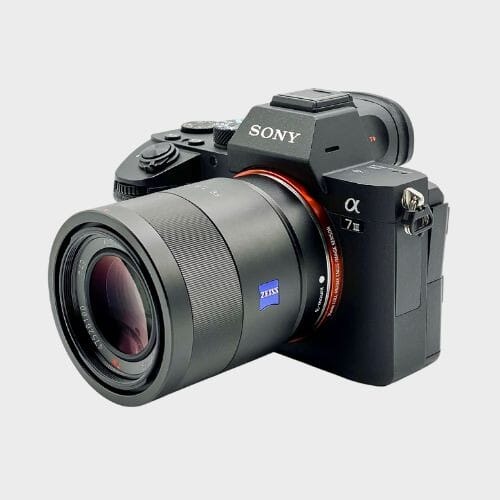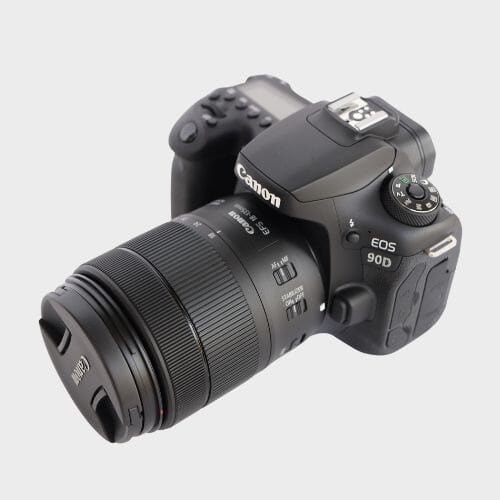Photo and Video Cameras
New: The Current State and Evolution of the Camera Market
Latest Camera Posts
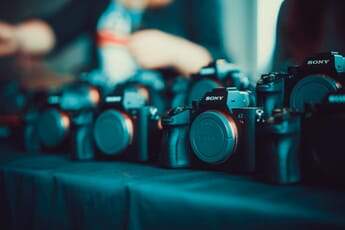 The Best Sony Mirrorless Cameras: Top 10 Picks Published in Mirrorless Cameras Sony offers an array of incredible mirrorless cameras. We share our top seven choices, including full-frame and APS-C models.
The Best Sony Mirrorless Cameras: Top 10 Picks Published in Mirrorless Cameras Sony offers an array of incredible mirrorless cameras. We share our top seven choices, including full-frame and APS-C models. Best Cameras for Night Photography: Top Picks and Features Published in Best in Class Cameras If you're looking to shoot stunning nighttime photos, you need one of the best cameras for night photography! Find the right camera for your needs.
Best Cameras for Night Photography: Top Picks and Features Published in Best in Class Cameras If you're looking to shoot stunning nighttime photos, you need one of the best cameras for night photography! Find the right camera for your needs.  Best Camera for Focus Stacking: Top Models in 2024 Published in Best in Class Cameras Discover the top cameras for focus stacking, a technique for capturing sharp, detailed images by merging multiple shots. Learn about essential features and best picks.
Best Camera for Focus Stacking: Top Models in 2024 Published in Best in Class Cameras Discover the top cameras for focus stacking, a technique for capturing sharp, detailed images by merging multiple shots. Learn about essential features and best picks.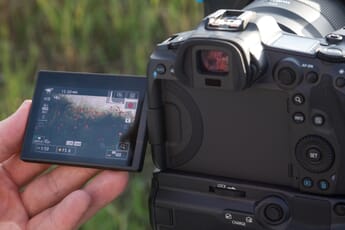 Best Canon Cameras with a Flip Screen: Top 7 Picks in 2024 Published in Best in Class Cameras We've selected seven of the best Canon cameras with a flip screen in 2024! Discover high-quality options for beginners and pros.
Best Canon Cameras with a Flip Screen: Top 7 Picks in 2024 Published in Best in Class Cameras We've selected seven of the best Canon cameras with a flip screen in 2024! Discover high-quality options for beginners and pros. Best Cameras for Blogging in 2024: Top 10 Picks Published in Best in Class Cameras Capture pro-quality images and enhance your blog posts to attract more readers using one of these best cameras for blogging!
Best Cameras for Blogging in 2024: Top 10 Picks Published in Best in Class Cameras Capture pro-quality images and enhance your blog posts to attract more readers using one of these best cameras for blogging!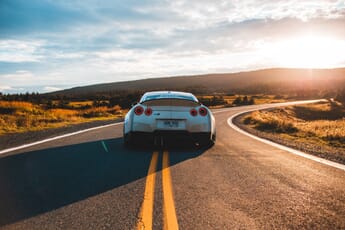 10 Best Cameras for Car Photography in 2024 Published in Best in Class Cameras Find the best camera for car photography in 2024. Grab the gear you need to capture stunning photos of stationary and moving vehicles!
10 Best Cameras for Car Photography in 2024 Published in Best in Class Cameras Find the best camera for car photography in 2024. Grab the gear you need to capture stunning photos of stationary and moving vehicles! The Smallest Full-Frame Cameras in 2024: Top 11 Picks Published in Best in Class Cameras Find the smallest full-frame camera so you can take beautiful photos on the go. We share pro-level and enthusiast options!
The Smallest Full-Frame Cameras in 2024: Top 11 Picks Published in Best in Class Cameras Find the smallest full-frame camera so you can take beautiful photos on the go. We share pro-level and enthusiast options!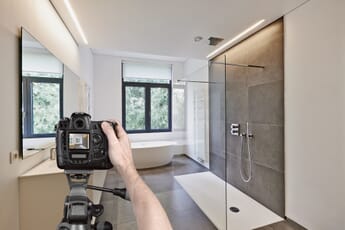 The 8 Best Cameras for Real Estate Photography in 2024 Published in Best in Class Cameras Our guide to help you choose the best camera for shooting real estate. Pick a top model and level up your interior and exterior photos!
The 8 Best Cameras for Real Estate Photography in 2024 Published in Best in Class Cameras Our guide to help you choose the best camera for shooting real estate. Pick a top model and level up your interior and exterior photos! Best Smartphones for Astrophotography: Expert Picks and Reviews Published in Cameras Find the best phones for astrophotography in 2024. Capture amazing photos of the night sky with only your smartphone!
Best Smartphones for Astrophotography: Expert Picks and Reviews Published in Cameras Find the best phones for astrophotography in 2024. Capture amazing photos of the night sky with only your smartphone!Popular Across Camera Categories
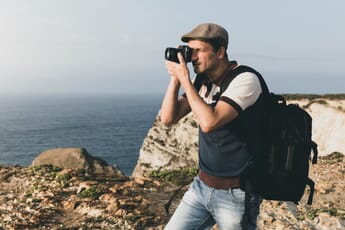 The Best Compact Cameras with a Viewfinder: Our Top 7 Picks Published in Compact Cameras Need a small camera but still want the convenience of a viewfinder? We share the best compact cameras with a viewfinder (for all budgets).
The Best Compact Cameras with a Viewfinder: Our Top 7 Picks Published in Compact Cameras Need a small camera but still want the convenience of a viewfinder? We share the best compact cameras with a viewfinder (for all budgets).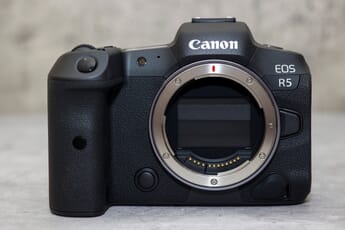 6 Best Canon Full-Frame Cameras (in 2024) Published in Best in Class Cameras Explore the best Canon full-frame cameras on the market today. Find the perfect model for sports, landscapes, wildlife, and more.
6 Best Canon Full-Frame Cameras (in 2024) Published in Best in Class Cameras Explore the best Canon full-frame cameras on the market today. Find the perfect model for sports, landscapes, wildlife, and more. Best Point and Shoot Camera Under $300 (Top 10 Picks in 2024) Published in Compact Cameras Find the best point and shoot cameras under $300. Discover the perfect camera for travel photography, street photography, and more!
Best Point and Shoot Camera Under $300 (Top 10 Picks in 2024) Published in Compact Cameras Find the best point and shoot cameras under $300. Discover the perfect camera for travel photography, street photography, and more! The Best Micro Four Thirds Cameras in 2024: 9 Top Picks Published in Mirrorless Cameras What are the best Micro Four Thirds cameras on the market today? We share the top MFT camera models, from budget models to pro-level bodies!
The Best Micro Four Thirds Cameras in 2024: 9 Top Picks Published in Mirrorless Cameras What are the best Micro Four Thirds cameras on the market today? We share the top MFT camera models, from budget models to pro-level bodies! The Best Cameras for Nature Photography in 2024: Top 10 Picks Published in Best in Class Cameras What is the best nature photography camera? We share our top 10 picks for photographers of all levels.
The Best Cameras for Nature Photography in 2024: Top 10 Picks Published in Best in Class Cameras What is the best nature photography camera? We share our top 10 picks for photographers of all levels.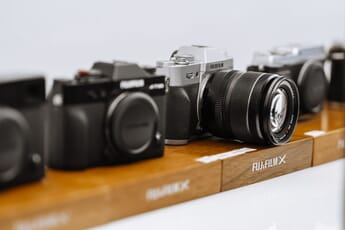 20 Most Expensive Cameras: Discover the Priciest Models! Published in Cameras Find out what the 20 most expensive cameras of 2024 have to offer. How do these powerful beasts compare, and are they really worth it?
20 Most Expensive Cameras: Discover the Priciest Models! Published in Cameras Find out what the 20 most expensive cameras of 2024 have to offer. How do these powerful beasts compare, and are they really worth it? Best Online Camera Stores (10 Reliable Picks in 2024) Published in Cameras See the 10 best online camera stores (chosen based on reliability, quality, and gear selection). Purchase amazing new and used equipment!
Best Online Camera Stores (10 Reliable Picks in 2024) Published in Cameras See the 10 best online camera stores (chosen based on reliability, quality, and gear selection). Purchase amazing new and used equipment! Best Budget Street Photography Cameras (10 Picks in 2024) Published in Best in Class Cameras Find the best budget street photography camera in 2024. Capture inspiring photos of bustling streets, people, and more!
Best Budget Street Photography Cameras (10 Picks in 2024) Published in Best in Class Cameras Find the best budget street photography camera in 2024. Capture inspiring photos of bustling streets, people, and more!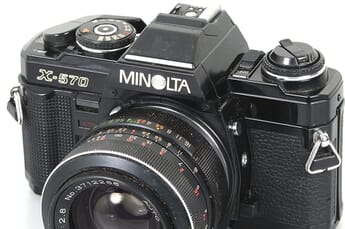 The 5 Best Minolta Film Cameras You Can Buy in 2024 Published in Best in Class Cameras Capture beautiful images with one of our five favorite Minolta models. Find the best Minolta film camera for your needs.
The 5 Best Minolta Film Cameras You Can Buy in 2024 Published in Best in Class Cameras Capture beautiful images with one of our five favorite Minolta models. Find the best Minolta film camera for your needs. The Top 7 Best Professional 4k+ Camcorders in 2024 Published in Best in Class Cameras It might sound like a blast from the past, but camcorders hit the forefront of video. Here are the best professional 4k+ camcorders in 2024!
The Top 7 Best Professional 4k+ Camcorders in 2024 Published in Best in Class Cameras It might sound like a blast from the past, but camcorders hit the forefront of video. Here are the best professional 4k+ camcorders in 2024! Best Cameras for Sports Photography Beginners on a Budget Published in Best in Class Cameras Beginners and experts alike should know the best cameras for sports photography. So, here are our top 10 picks to give you a great headstart.
Best Cameras for Sports Photography Beginners on a Budget Published in Best in Class Cameras Beginners and experts alike should know the best cameras for sports photography. So, here are our top 10 picks to give you a great headstart.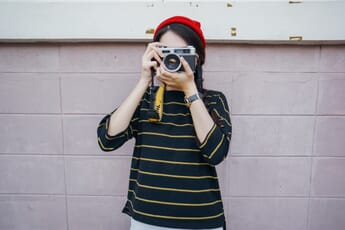 8 Best Cameras for Teens to Get Started with Photography Published in Best in Class Cameras Find the best cameras for teens! Dive into photography, vlogging, and streaming with our top picks for all budgets.
8 Best Cameras for Teens to Get Started with Photography Published in Best in Class Cameras Find the best cameras for teens! Dive into photography, vlogging, and streaming with our top picks for all budgets.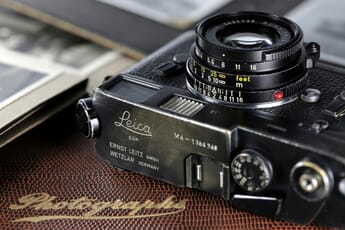 Best Places to Sell Used Camera Equipment in the US (Online or In-Store) Published in Cameras As photographers, we go through a lot of gear all of the time. Here is our list of the best places to sell used camera equipment in the US!
Best Places to Sell Used Camera Equipment in the US (Online or In-Store) Published in Cameras As photographers, we go through a lot of gear all of the time. Here is our list of the best places to sell used camera equipment in the US! 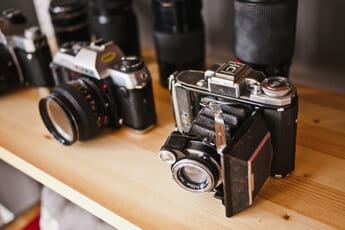 Best Cameras with High Megapixels in 2024: Top 7 Picks Published in Best in Class Cameras Looking for a high-megapixel camera? We share our absolute favorite picks for beautifully detailed images.
Best Cameras with High Megapixels in 2024: Top 7 Picks Published in Best in Class Cameras Looking for a high-megapixel camera? We share our absolute favorite picks for beautifully detailed images. The Best Low Light Mirrorless Cameras (in 2024) Published in Mirrorless Cameras What are the best mirrorless cameras for low light photography? These 8 picks will get you capturing indoor and night shots like a pro.
The Best Low Light Mirrorless Cameras (in 2024) Published in Mirrorless Cameras What are the best mirrorless cameras for low light photography? These 8 picks will get you capturing indoor and night shots like a pro.General Camera Guides
 The Best Camera Brands in 2024: Top 10 Picks Published in Cameras We share the 10 best camera brands for all experience levels and shooting preferences. Pick the brand that works for you!
The Best Camera Brands in 2024: Top 10 Picks Published in Cameras We share the 10 best camera brands for all experience levels and shooting preferences. Pick the brand that works for you! Best Places to Rent Camera Gear in the US (Online and In-Store) Published in Cameras Find the best places to rent camera gear in the US so you can use the best equipment without paying hefty purchase prices.
Best Places to Rent Camera Gear in the US (Online and In-Store) Published in Cameras Find the best places to rent camera gear in the US so you can use the best equipment without paying hefty purchase prices. Camera Financing: How to Buy a Camera Now and Pay Later Published in Cameras Find the Best Camera Financing Options so you can buy a camera now and pay later using low APR monthly payments.
Camera Financing: How to Buy a Camera Now and Pay Later Published in Cameras Find the Best Camera Financing Options so you can buy a camera now and pay later using low APR monthly payments. B&H Payboo Card Review: An Easy Way to Save on Gear? Published in Cameras Should you get the B&H Payboo Credit Card? Learn all about the updated Payboo Card – from what it offers to how it works – in our review.
B&H Payboo Card Review: An Easy Way to Save on Gear? Published in Cameras Should you get the B&H Payboo Credit Card? Learn all about the updated Payboo Card – from what it offers to how it works – in our review.Cameras Subcategories
Discover Digital Cameras on PhotoWorkout
Welcome in our category section covering the “Best Cameras in 2025“! Our meticulously curated articles provide insights across a broad spectrum of camera types and uses.
Kickstart your search with our list of the best cameras for photography by exploring the 10 Best Cameras for Car Photography in 2025, essential for capturing breathtaking automobile imagery.
For photography enthusiasts preferring light gear without compromising image quality, our guide on the Smallest Full-Frame Cameras in 2025 is a must-read. Meanwhile, real estate photographers can discover the top picks in our article on the 8 Best Cameras for Real Estate Photography in 2025.
If you’re loyal to Canon, our compilation of the 6 Best Canon Full-Frame Cameras in 2025 will be invaluable. We also cover camera-specific features and applications, such as Best Cameras with Focus Stacking or Best Budget Street Photography Cameras.
Among the “Best-in-Class Cameras,” you’ll find a nostalgia-inducing dive into photography with The 5 Best Minolta Film Cameras You Can Buy in 2025. We continue our exploration of film photography with 8 Best Film Cameras in 2025, and those seeking affordable yet quality point-and-shoot options should read about the Best Point-and-Shoot Cameras Under $500.
Whether you’re a beginner, an enthusiast, or a professional, our “Best Cameras” category serves as a one-stop resource for all your camera needs.
For more detailed insights into specific types of cameras, delve into our focused subcategories:
- Compact Cameras: Also known as point-and-shoot cameras, these devices are perfect for those who want a simple, easy-to-use camera that fits in a pocket. They come with fixed lenses and offer automatic settings, making them ideal for casual photography.
- DSLR Cameras: Digital Single Lens Reflex (DSLR) cameras use a mirror mechanism to direct light from the lens to the viewfinder. They offer interchangeable lenses and manual controls, providing more creative flexibility. DSLRs are favored by professionals and serious hobbyists for their superior image quality and adaptability.
- Mirrorless Cameras: These cameras are a newer technology that allows for a lighter, more compact body than DSLRs. As the name suggests, they lack the mirror mechanism of a DSLR, instead, directing light from the lens straight to the image sensor. Mirrorless cameras provide high-quality images, interchangeable lenses, and fast performance, bridging the gap between compact and DSLR cameras.
Explore each category to understand the intricacies and potential these diverse camera types offer to your photographic journey.

